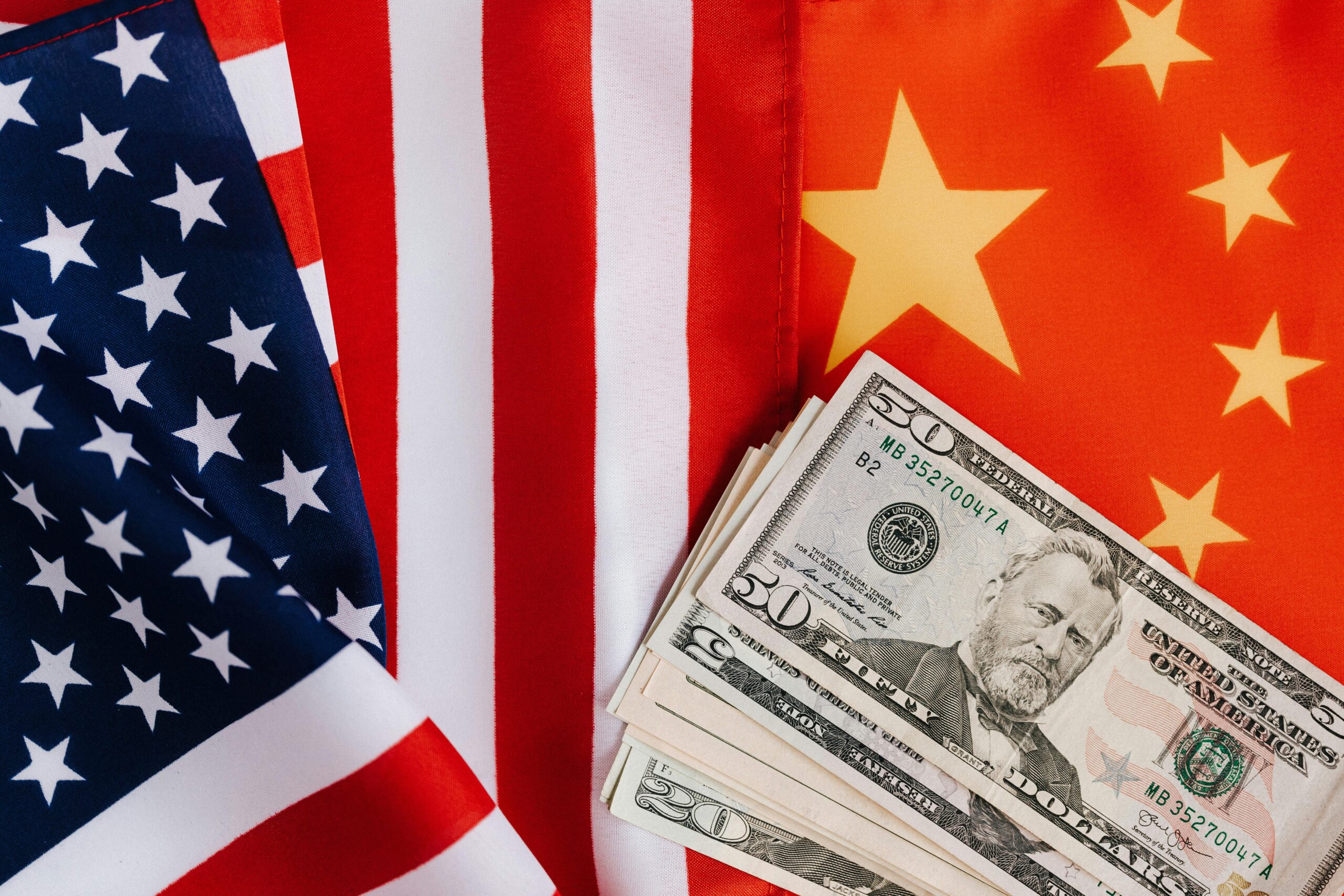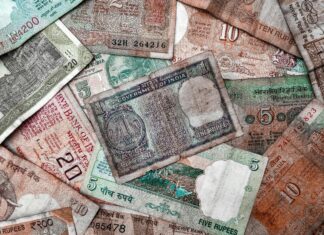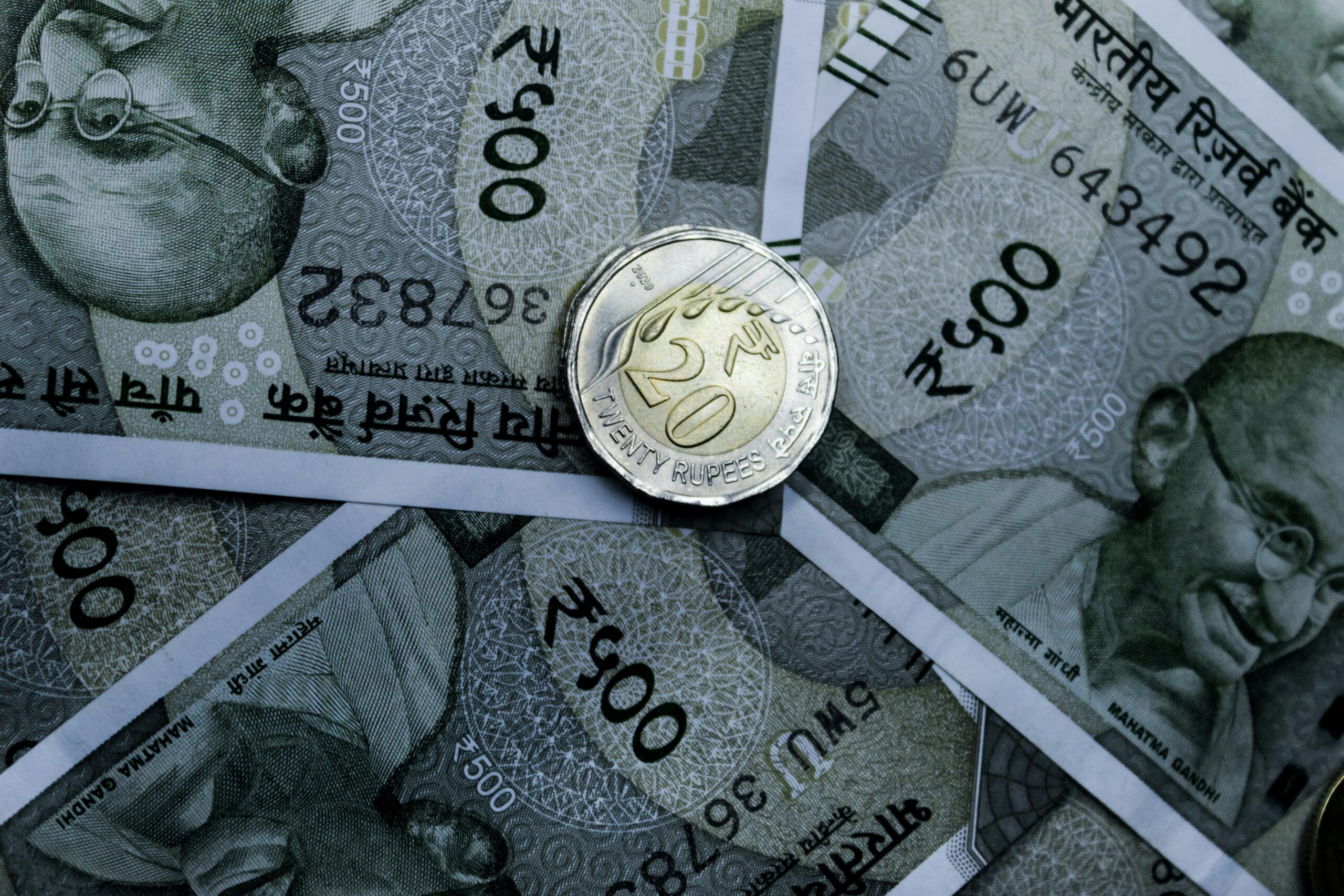Are you searching for the State Bank of India SWIFT code? If yes, you’re not alone! Many individuals and businesses often find themselves needing this crucial information for international transactions. Understanding the SWIFT code for State Bank of India is essential for ensuring that your money is transferred securely and accurately across borders. But what exactly is a SWIFT code, and why is it so important? It’s not just a random string of letters and numbers; it plays a vital role in the global financial system. With the rise of digital banking and global commerce, knowing how to locate and use the SWIFT code for SBI can save you time, money, and headaches. In this blog post, we will unravel the mysteries of the State Bank of India SWIFT code and how it can facilitate your foreign transactions. Whether you are a seasoned traveler, an expat, or a business looking to expand internationally, understanding this code can be a game changer. So, are you ready to dive in and discover everything you need to know about the SBI SWIFT code? Let’s get started!
What is the State Bank of India Swift Code? Unraveling the Key to International Transactions
Alright, so let’s dive right into the whole State Bank of India SWIFT code thingy. You might be wondering, “What’s the big deal?” Well, let me tell ya, it’s actually pretty important if you’re doing any international transactions, or at least that’s what they say. The State Bank of India SWIFT code is like the secret handshake for banks around the globe, or something along those lines. It helps in identifying specific banks when you are transferring money, which is kinda neat, I guess.
So, first off, why do you even need the State Bank of India SWIFT code? I mean, who wouldn’t want to send their hard-earned money across borders, right? It’s not just for fun, it’s necessary for wire transfers, and if you don’t have it, well, good luck getting your money to the right place. Not really sure why this matters, but it’s one of those things you just gotta know if you’re dealing with foreign currencies or sending money to your long-lost cousin in Australia (who probably doesn’t even need it).
Now, let’s talk numbers. Each SWIFT code is made up of 8 to 11 characters. It usually looks something like this: SBININBBXXX. Here’s how it breaks down, in case you were wondering:
| Character | Meaning |
|---|---|
| SBIN | Bank code for State Bank of India |
| IN | Country code for India |
| BB | Location code for Mumbai, I think |
| XXX | Branch code, optional but still important |
So, if you ever need to send money to SBI, you gotta know which branch you’re sending it to, right? If you don’t, well, let’s just say your money could end up in the Bermuda Triangle of banking, never to be seen again. Yikes!
In India, the State Bank of India SWIFT code is often used in foreign remittance. And let me tell ya, the process can be a bit of a maze. You might need to fill out forms, provide ID, and all that jazz. It’s like a rite of passage for anyone trying to send money overseas. You know, nothing says “adulting” like dealing with bank paperwork.
Now, here’s the kicker: not all branches of SBI are going to have the same SWIFT code. Nope, they’re like snowflakes, each one different. So if you’re thinking of sending money to a specific branch, make sure you’ve got the right code. Because if you don’t, it’s like sending a letter without an address – good luck with that!
Here’s a little list of some common State Bank of India SWIFT codes you might need:
- SBIN0000170 (for the main branch in Mumbai)
- SBIN0001081 (for Delhi)
- SBIN0005018 (for Kolkata)
And honestly, this might just be the tip of the iceberg. There are tons of SBI branches, and each one has its own unique code. Maybe it’s just me, but I feel like they could’ve made it a bit simpler.
When you’re filling out your transfer details, you might also wanna double-check other information too. Like the recipient’s account number, name, and that they actually want the money you’re sending. Nothing worse than sending cash to the wrong person. Imagine sending money to your friend, but instead, it goes to your old high school nemesis. Awkward!
Also, watch out for the fees. Every bank has its own fees for international transfers, and sometimes those fees can be as shocking as finding out your favorite snack is discontinued. So, read the fine print and don’t get blindsided!
Here’s a handy dandy table of things you might need when making an international transfer with SBI:
| Requirement | Description |
|---|---|
| Recipient’s Name | Make sure it’s spelled right |
| Recipient’s Account Number | Double-check this one, folks |
| State Bank of India SWIFT Code | You gotta have this, remember? |
| Purpose of Remittance | They might ask why you’re sending the cash |
| ID Proof | Yup, they’ll probably want to see your ID |
So, there you have it! The State Bank of India SWIFT code and why it matters when you’re trying to send money overseas. It’s a bit of a hassle, but once you get the hang of it, you’ll be sending money like a pro. Just remember, it’s not just about the code; it’s about making sure everything is in order. Good luck out there, you future international money mover!
Top 5 Benefits of Using State Bank of India Swift Code for Your International Transfers
If you’ve ever tried sending money overseas, you might have come across this term “SWIFT Code.” Now, you may be thinking, “What in the world is a SWIFT code?” Well, maybe it’s just me, but I feel like it’s one of those things that sound way more complicated than it really is. The state bank of india swift code is no exception to that rule.
First off, let’s break it down a bit. A SWIFT Code is a unique identifier for banks and financial institutions worldwide. It’s like a postal address, but for banks. Instead of sending letters, your money needs this code to reach its destination. The state bank of india swift code is particularly important when you’re sending money to or from India.
Okay, so how does this whole thing work? Well, every bank has a different SWIFT code. For the State Bank of India, it’s usually something like SBININBBXXX. Now, the first four letters “SBIN” represents the bank itself (that’s State Bank of India, duh), the next two letters “IN” indicates the country (which is India, obviously), and the last two characters are for the specific branch. But hey, don’t take my word for it – always double-check, right?
Here’s a little table that might help clear things up a bit:
| Component | Description |
|---|---|
| Bank Code | SBIN (State Bank of India) |
| Country Code | IN (India) |
| Location Code | BB (specific location) |
| Branch Code | XXX (can vary by branch) |
Now, regarding the state bank of india swift code, you might be wondering, “How do I find mine?” Well, you could go online, or, you know, just ask your bank. I mean, it’s not like they’re going to keep it a secret or something. However, you might want to check the bank’s official site, cause sometimes websites are more up-to-date, you know?
Here’s the thing, though: the state bank of india swift code can change. I know, right? Isn’t that just peachy? So, if you’re planning to make a transfer, it’s always a good idea to verify the code first. I don’t know about you, but I wouldn’t want my money going on a wild goose chase because I used the wrong code.
Now, let’s say you’re sending money. You’ll need the recipient’s SWIFT code, their account number, and sometimes even their address. It’s like a treasure map, but instead of gold, you’re sending cash. Just a minor detail, but important nonetheless.
And don’t get me started on how many variations of codes there are! There’s the IBAN, BIC, and all those other acronyms that seem to pop up just to confuse us. But hey, at least the state bank of india swift code is somewhat consistent, right?
Also, here’s a fun fact: did you know that SWIFT stands for Society for Worldwide Interbank Financial Telecommunication? I mean, who knew banking could be so fancy! But then again, not really sure why this matters, but it sounds important, right?
If you’re thinking of transferring money, here’s a handy checklist:
- Get the correct SWIFT code for the State Bank of India.
- Verify the recipient’s account info, you don’t wanna mess that up!
- Check if there are any fees associated with the transfer; cause, let’s be honest, no one likes surprise fees.
- Wait for confirmation from your bank, cause it’s better to be safe than sorry.
Now, let’s talk about some practical insights. When you’re using the state bank of india swift code, you might also want to consider the exchange rates. They can fluctuate, sometimes hourly! So, if you’re thinking of sending money today, it might be worth waiting a day or two to see if the rates improve. It’s like gambling, but with your hard-earned cash.
Lastly, if you’re sending large sums or doing it often, you might wanna look into different options. There are services out there that might offer better rates or lower fees. Just saying, it’s always good to shop around.
In the end, knowing your state bank of india swift code can save you a lot of headaches. It’s a small piece of information that packs a big punch when it comes to international transactions. Just keep your eyes peeled and your wallet ready, and you’ll be just fine!
State Bank of India Swift Code: Your Ultimate Guide to Global Banking Success
The State Bank of India (SBI), oh boy, it’s a biggie in the banking world, you know? And if you’re doing any kinda international transactions, you might have heard about something called a SWIFT code. It’s like a secret handshake for banks, or at least, that’s what I think. Not really sure why this matters, but if you’re sending money overseas, you probably gonna need it.
So, what the heck is a SWIFT code? Well, it stands for Society for Worldwide Interbank Financial Telecommunication (wow, that’s a mouthful!). It’s a code that identify banks worldwide. The State Bank of India SWIFT code is crucial for ensuring your money gets to the right place. Without it, you might as well be tossing your cash into a black hole.
Now, let’s break it down a bit. The SWIFT code is usually 8 to 11 characters long. It’s made up of letters and numbers, and it tells you which bank is which. For SBI, the typical SWIFT code looks something like this: SBININBBXXX. The “SBIN” part represents State Bank of India, while the “IN” shows that it’s in India, and “BB” identifies the branch. The last three Xs? They’re optional and usually refers to a specific branch. Kinda nifty, right?
Here’s a little table to help you understand better:
| SWIFT Code | Bank Name | Country | Branch |
|---|---|---|---|
| SBININBBXXX | State Bank of India | India | Main Branch |
| SBININBBAAA | SBI New York Branch | USA | New York Branch |
| SBININBBDEL | SBI Delhi Branch | India | Delhi Branch |
So, if you’re looking for the State Bank of India SWIFT code, keep an eye out for those letters and numbers. Just don’t confuse it with your account number, ’cause that would be a total disaster. Seriously, can you imagine sending money to the wrong account? Yikes!
Now, if you’re like me, you probably wondering, “How do I find my branch’s SWIFT code?” Well, you could ask your bank, but who has the time for that, right? Instead, just hop online, and you can usually find it on SBI’s official website or any banking directory. It’s like finding Waldo, but less fun and more serious.
Here’s some practical insights. When you sending money abroad, make sure you double-check the State Bank of India SWIFT code. A tiny mistake can lead to big headaches, and nobody wants that. Plus, some people think it’s a conspiracy that banks make it complicated on purpose. Maybe it’s just me, but I feel like they thrive on confusion sometimes.
Now, let’s talk about fees. Ahh, the dreaded fees. When you use the SBI SWIFT code for international transfers, there might be some charges involved. It’s usually not free, and it can vary depending on how much you’re transferring and where it’s going. You might end up paying a flat fee, or it could be a percentage of the transfer amount. Classic, right?
Just to keep it real, here’s a quick rundown of the fees you might encounter:
| Transfer Amount | Typical Fee |
|---|---|
| Up to $500 | $30 – $50 |
| $500 – $1000 | $50 – $75 |
| Above $1000 | $75 – $100+ |
And, don’t forget about the exchange rate! That sneaky little number can make a huge difference in how much your recipient actually gets. Always check that before hitting send, or you could end up in a situation where you’re like, “Wait, that’s not what I meant!”
If you’re planning to transfer money regularly, it could be worth your while to check out an international money transfer service. They might have better rates and lower fees than traditional banks. Just saying, it doesn’t hurt to look around for the best deals.
So, in summary, the State Bank of India SWIFT code is super important if you wanna make your money move across borders. It’s not rocket science, but getting it wrong? Yeah, that’s a whole different ballgame. Keep this info handy, and you’ll be a pro at sending money in no time, or at least less confused than before.
If you have any questions about the State Bank of India SWIFT code, just ask. But remember, Google is your friend too! Happy transferring!
How to Find Your State Bank of India Swift Code: A Step-by-Step Instruction Manual
If you’re sending money internationally, you might’ve heard about something called the State Bank of India SWIFT code. Honestly, not really sure why this matters, but it’s kinda important if you don’t want your cash goin’ to some random place. So, what’s this SWIFT code anyway? Well, it’s like a secret handshake for banks, you know? It helps ensure your money get’s where it needs to go, safe and sound.
What is a SWIFT Code?
A SWIFT code, which is also called a BIC (Bank Identifier Code) is a unique identifier for banks around the world. It’s usually 8 to 11 characters long, which seems arbitrary, but whatever. It includes letters and numbers, and each part of the code tells ya something specific about the bank.
Here’s a breakdown of a typical State Bank of India SWIFT code:
| Part | Description |
|---|---|
| 4 chars | Bank Code (for State Bank of India, it’s SBIN) |
| 2 chars | Country Code (IN for India) |
| 2 chars | Location Code |
| 3 chars | Branch Code (optional) |
For example, if your SWIFT code is SBININBBXXX, “SBIN” tells you it’s State Bank of India, “IN” is for India, “BB” is the location, and “XXX” could mean a specific branch.
How to Find the SWIFT Code for State Bank of India
Finding the State Bank of India SWIFT code might seem like looking for a needle in a haystack sometimes. But don’t worry, it’s not that hard, I promise! You can find it in a few places:
- Bank Statements: Check your account statements, they often print your SWIFT code somewhere in there.
- Official Website: Go to the State Bank of India’s official website. They usually have a section dedicated to international banking where they list their SWIFT codes.
- Call Customer Service: If all else fails, just call them up and ask! They probably won’t bite.
Why You Might Need the SWIFT Code
So, you might be thinking, “Why do I even need this code?” Well, if you’re wiring money, receiving international payments, or maybe making some big purchases from overseas, you’ll probably need it. It’s vital for ensuring that the money gets deposited into the correct account. I mean, who wants to send money and find out it went to Mr. Random instead of their buddies in Mumbai?
Common SWIFT Codes for State Bank of India
Now, if you’re like me and not in the mood to look it up yourself, here’s a quick list of some common State Bank of India SWIFT codes. Just remember, these codes can vary based on your branch, so double-check before sending any cash!
| Branch | SWIFT Code |
|---|---|
| State Bank of India (Main) | SBININBB |
| State Bank of India, New York | SBINUS33 |
| State Bank of India, London | SBINGB2L |
| State Bank of India, Toronto | SBINCATX |
Tips for Using the SWIFT Code
- Always double-check: It’s just a simple code, but typing it wrong could mean disaster. Like sending your money to a black hole or something equally bad.
- Check the branches: If you’re not sure what branch you’re dealing with, you might end up using the wrong code. And we don’t want that!
- Keep it handy: If you’re doing international transactions often, maybe save it in your contacts or something. You know, like how you save your favorite pizza place.
Final Thoughts
Okay, let’s be real, the whole State Bank of India SWIFT code thing might seem tedious. But in the grand scheme of things, it’s just one of those necessary evils when dealing with international money transfers. Maybe it’s just me, but I feel like once you get the hang of it, it’s not so scary after all.
So, next time you’re about to send money overseas, just remember: find that SWIFT code, double-check it, and send your hard-earned cash without a hitch. Easy peasy, right? Well, mostly.
Common Mistakes to Avoid When Using the State Bank of India Swift Code for Transfers
So, you’re curious about the State Bank of India SWIFT code? Well, you’ve landed on the right spot, I guess. Or maybe not. Who knows? SWIFT codes are those magical strings of characters that help banks send money to each other across the globe. And if you’re dealing with the State Bank of India, ya really ought to know what that code is. Not really sure why this matters, but it’s one of those things that helps your money not get lost in the ether of international banking.
Alright, so let’s break this down a bit. The SWIFT code for State Bank of India is generally structured in a certain way. It’s like a secret handshake for banks, ya know? Here’s the typical format:
- First four characters: Bank code (SBI in this case).
- Next two characters: Country code (IN for India).
- Next two characters: Location code (specific branch or city).
- Last three characters: Branch code (which is optional).
So, if you’re looking for a specific branch’s code, it might look something like this: SBININBBXXX. But don’t quote me on that, it could change, or I might just be making stuff up.
Now, let’s get into the nitty-gritty of finding the State Bank of India SWIFT code. Not everyone knows this, but not every branch has its own unique SWIFT code. Some branches share a code. How confusing! Just imagine trying to send money to the wrong place. Whoops!
Here’s a little table that might help:
| Branch Name | SWIFT Code |
|---|---|
| State Bank of India, New Delhi | SBININBB001 |
| State Bank of India, Mumbai | SBININBB002 |
| State Bank of India, Bangalore | SBININBB003 |
| State Bank of India, Chennai | SBININBB004 |
I mean, you get the picture, right? But if you’re thinking of traveling to one of those branches, maybe call ahead? I feel like some branches might have different codes depending on what mood they’re in or something.
Okay, so maybe you’re wondering, how do you actually use this SWIFT code? Well, it ain’t rocket science, but it’s also not a walk in the park. You’ll need this code when you’re transferring money internationally. So if you’re sending your cousin in the States some cash to help them out, you gotta have this code handy.
But here’s the kicker: if you type it in wrong, your money could go on an unexpected adventure. Like, it could end up in Timbuktu or something. Maybe it’s just me, but I feel like a good chunk of the population doesn’t even know what a SWIFT code is until they need to wire money.
Few Practical Tips for You:
- Double-check the code: Because let’s be real, no one likes losing money.
- Ask your bank: If you’re unsure, just ask them. They’re there to help, right?
- Use online resources: There’s a ton of websites that list these codes. Just don’t rely on any one source, because, y’know, inaccuracies happen.
Also, keep in mind that the State Bank of India SWIFT code can change. I mean, I’m not saying it will, but I wouldn’t be shocked if it did. Banks love to keep things exciting.
And speaking of excitement, did you know that you can also use the IBAN (International Bank Account Number) along with the SWIFT code? It’s like a dynamic duo of international money transfers. It’s not always required, but it doesn’t hurt to have it on hand just in case you’re trying to be extra careful.
Fun Facts About SWIFT Codes:
- Acronym: SWIFT stands for Society for Worldwide Interbank Financial Telecommunication. Fancy, huh?
- Established: The SWIFT system was founded in 1973. That’s older than most tech companies today!
- Global Reach: SWIFT codes are used in over 200 countries. So, you’re not alone in this banking maze!
So there you have it! The State Bank of India SWIFT code and all its quirky details. Use this info wisely, or, you know, just wing it like most people do. After all, who needs to be perfect in this crazy world of banking? Just don’t forget the code when you need it!
Conclusion
In conclusion, understanding the State Bank of India’s SWIFT code is essential for anyone engaging in international transactions, whether for personal or business purposes. The SWIFT code not only identifies the bank but also ensures the secure and efficient transfer of funds across borders. We discussed how to find the correct SWIFT code for various branches, its importance in facilitating seamless transactions, and the role it plays in global banking operations. If you are planning to initiate an international wire transfer or need to receive funds from abroad, make sure you have the correct SWIFT code at hand to avoid any delays. For further assistance, consider reaching out to your local SBI branch or visiting their official website for the most accurate and up-to-date information. Don’t let the complexities of international banking hold you back; stay informed and secure your financial transactions today!






























































